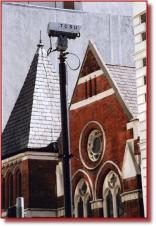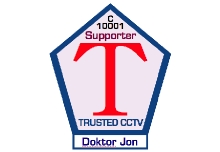 |
||
 |
||
![]()
![]()
![]()
![]()
![]()
![]()
![]()
![]()
![]()
![]()
![]()
![]()
![]()
![]()
![]()
![]()
![]()
![]()
![]()
![]()
![]()
![]()
![]()
![]()
![]()
![]()
![]()
![]()
![]()
![]()
![]()
![]()
![]()
![]()
![]()
![]()
![]()
![]()
![]()
IMPORTANT: No material may be reproduced, copied or redistributed from this site, without the express written consent of doktorjon.co.uk
All the detailed information on this site is provided in good faith; and as such, Doktor Jon does not accept responsibility for any consequential loss, injury or disadvantage resulting from any individual or organisation acting on the details contained herein.
© doktorjon.com 2004 - 2012
![]()
![]()
![]()
![]()
![]()
![]()
![]()
![]()
![]()
![]()
![]()
![]()
![]()
![]()
![]()
![]()
![]()
![]()
![]()
![]()
![]()
![]()
![]()
![]()
![]()
![]()
![]()
![]()
Please Note - Doktor Jon is currently upgrading his site, so you may see some layout changes on various pages, whilst the work is in progress.
Hopefully, the complete re-design and improvements, should be completed during 2012.
Step 6 is about Procurement - Obviously the degree of complexity in the purchasing process will very much depend on the type of system and of course, the abilities of the eventual contractor. It would be prudent to develop a detailed shopping list for preferred equipment, wherever possible specifying the exact and / or equivalent models required, rather than leaving it up to the supplier to 'find something suitable'.
It is recommended that whatever equipment is being sourced, it should be the responsibility of the system operator, to lay down precise requirements and objectives in the System Profile, thereby avoiding any subsequent misunderstandings on the capability of the equipment.
Wherever possible, define requirements (for example, we need to clearly identify an individuals face at a defined point, at any time throughout the day or night), rather than insisting on an abstract camera sensitivity figure (e.g. 0.2 lux), which is often a recipe for an ongoing dispute. It would take an expert to decide whether an individual piece of equipment, for example a camera / lens combination is capable of achieveing a specified technical performance, whereas a lay person can easily understand if the camera is producing the required practical results under any given condition.
Step 7 concerns Installation and Operator Training - Again, the installation and commissioning process will vary enormously depending on the scale and complexity of the proposed installation. Wherever possible, constant liaison with the approved contractor should be an integral part of the commissioning process. In most cases, it would be prudent to ensure that allowance has been made for adequate staff training on the correct use and maintenance of the various constituent parts of the system.
In practice, depending on the location and complexity of the system, it would be sensible to say that perhaps 25% (or a minimum of 3 at any time) of the staff on site, are completely familiar with all aspects of using the equipment (including making copies of vital evidential recordings if requested by the police).
It is also absolutely essential that at least one copy of the system Technical and Operational manual is readily available at all times. This should include full details of the system components, technical brochures and operating instructions for each component part, detailed instructions on how to provide copies of recorded material (remember to keep spare blank media available for this purpose), and full contact details (including 'out of hours' numbers) for key technical / management personnel, and also the supply or maintenance company (and technical helplines).
Step 8 requires Post Installation Assessment - Once the installation has been completed (or in the case of larger systems, as each phase is about to be signed off), it is vitally important that a detailed evaluation is made to ensure that the system and it's constituent parts are performing precisely as predicted and required. It's at this stage that any obvious shortcomings can be immediately identified and corrected.
Step 9 requires the development of a Code of Practice (CoP) and Operating Guidelines - No matter what size or type of video surveillance system, it is considered "good practice" to at the very least, devise some appropriate 'Operating Guidelines' for a smaller installation, and a detailed and robust "Code of Practice" for larger, and in particular 'Public Space' camera schemes. These should not really be regarded as dead documents, but rather a work in progress, where updates and improvements are incorporated as and when required.
Step 10 depends on routine ongoing Performance Assessment Surveys (PAS) - There are essentially two levels of ongoing assessment. At it's most simple state, constant evaluation should be made of the technical performance of the system as a whole, and its individual components.
In addition, the overall technical and operational effectiveness of the installation should be thoroughly assessed at regular fixed intervals, perhaps every three to six months, and the results of the evaluation used almost as a constant loop to measure and improve performance, where practical and affordable.
Subject to feedback, further work will be carried out on developing this section. If you have any specific requests for more information, comments or suggestions for inclusion in this project, please let me know:- e-mail to: info[at]doktorjon.co.uk

Is your Video Surveillance System
capable of being 'TRUSTED'©
Let's have a slightly more detailed look at the various stages involved in achieving a video surveillance system that is TRUSTED"©.
It's worth quickly mentioning that although these stages normally apply to a system about to be installed, it is equally valuable to review some if not all of these stages for an existing installation.





